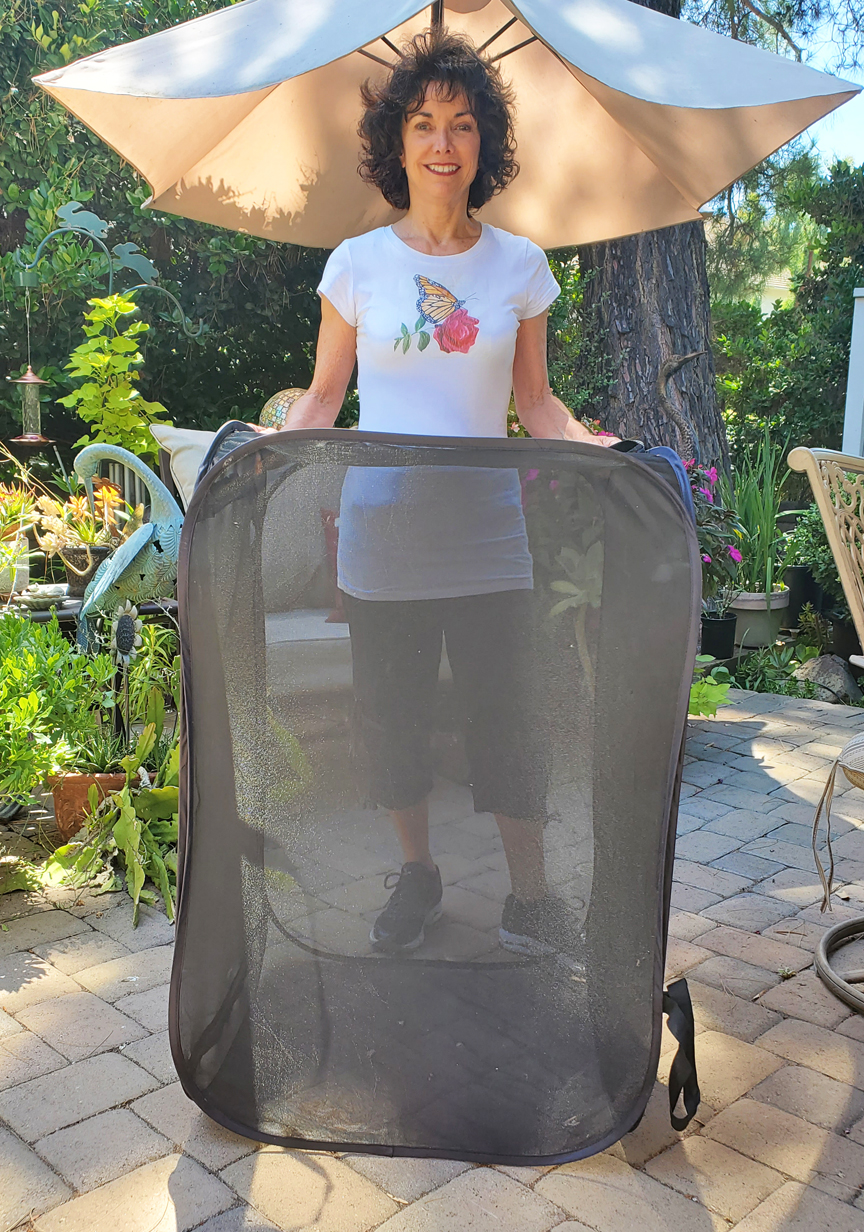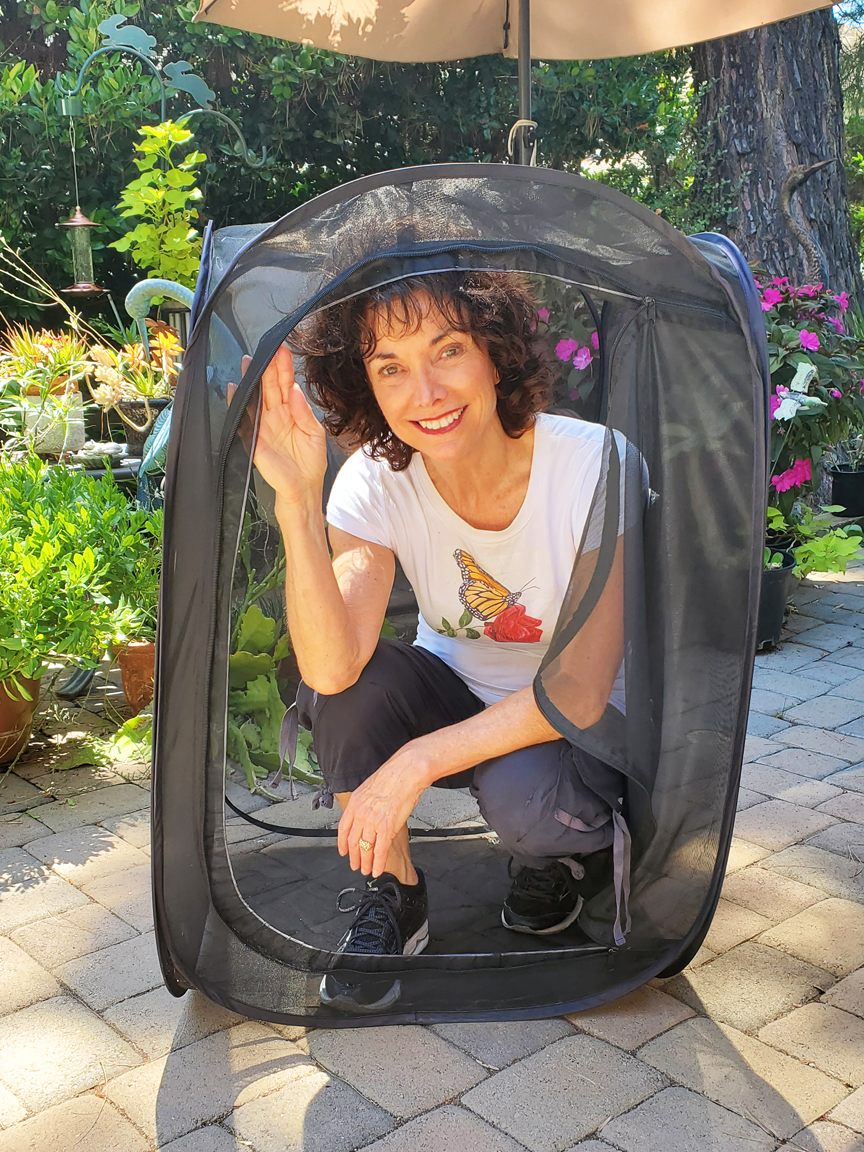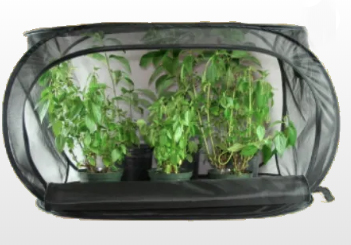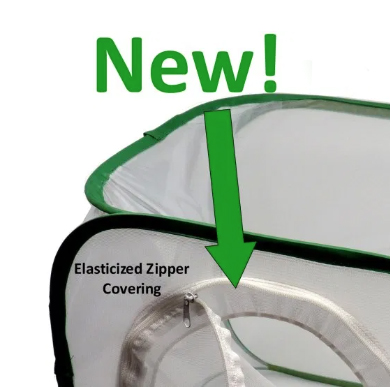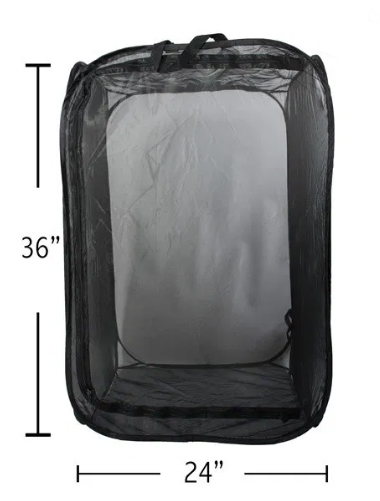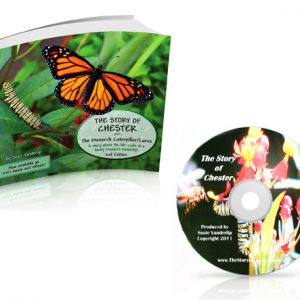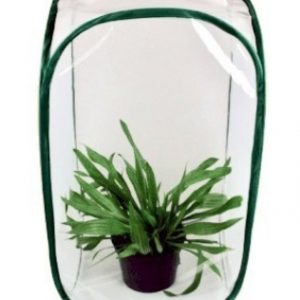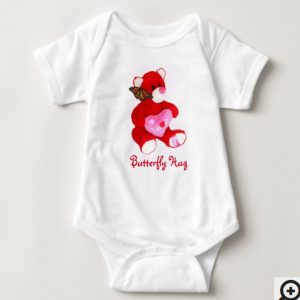Shop
Butterfly Habitat – Large 23x23x36
$29.50
Large Butterfly Pop-Up Habitat (Plastic Window)
23″ x 23″ x 36″
(NOTE: NOT AVAILABLE FOR USE IN CALIFORNIA AT THIS TIME)
Made with an elasticized zipper covering to keep caterpillars and butterflies safer!
Handles at the top of all our cages for easy carrying.
Great for PROTECTING caterpillars and chrysalids from tachinid flies, wasps and other predators. Our large pop-ups are made of paratasoid-resistant netting and do NOT have a clear plastic panel. The large pop-ups can be used vertical for tall host plants or horizontal when using smaller host plants. Many butterflies will pair and lay eggs in the large pop-ups. All our pop-up habitats can be washed/sanitized by hand and fold flat for convenient storage. All pop-up habitats can be washed/sanitized by hand and fold flat for convenient storage.
MONARCH CATERPILLARS IN HABITAT
Place a paper towels on the bottom and change it every day to remove caterpillar frass (poop) to avoid disease.
You can place a multiple one to three gallon milkweed plants in the habitat that have caterpillars on the plants.
Make sure you have enough milkweed to feed them all (each caterpillar eats approximately 32 leaves in the 12-14 days it is a caterpillar/larva). Water the plant regularly.
Drooping leaves means you are not watering the plant enough.
You may choose to spray your plant leaves with a 5% bleach to water solution before any caterpillars are on it to eliminate O.e . Let plant stand for 60 seconds,
spray the leaves off and pat dry.
MAKING ITS CHRYSALIS IN THE CAGE
When the caterpillar is fully grown (12-14 days), it will crawl off the milkweed plant up to the top of the cage and make its chrysalis. It will be in the
chrysalis 2 weeks. Watch for the day it goes from green to black and orange. The chrysalis has thinned, and you are seeing the butterfly inside.
That is the day it will eclose (emerge)! Stay close and watch. It’s quite amazing! Let the newly eclosed monarch hang for at least 2 hours and it is
opening and closing its wings.
RELEASE THE BUTTERFLY!
Release it from the cage into the sky! FYI – if it is a cold or rainy day (colder than 55 degrees), you can wait until the
next morning to release it. After that, if you keep it in the cage that second day due to climate outside, place a small dish with sugar water and a
piece of fresh sponge on the bottom of the cage for the butterfly to drink. You may also put in slices of orange or watermelon. Do not try to keep
it as a “pet” in the cage. It will not survive. It needs to go out and fly and drink nectar from flowers 🙂
Learn more at: https://vanderlip.com/monarch-butterfly-speaker-blog/
To certify your garden as a MONARCH WAYSTATION, go to http://www.monarchwatch.org
Made with an elasticized zipper covering to keep caterpillars and butterflies safer!
Handles at the top of all our cages for easy carrying.
Great for PROTECTING caterpillars and chrysalids from tachinid flies, wasps and other predators. Our large pop-ups are made of paratasoid-resistant netting and do NOT have a clear plastic panel. The large pop-ups can be used vertical for tall host plants or horizontal when using smaller host plants. Many butterflies will pair and lay eggs in the large pop-ups. All our pop-up habitats can be washed/sanitized by hand and fold flat for convenient storage. All pop-up habitats can be washed/sanitized by hand and fold flat for convenient storage.
MONARCH CATERPILLARS IN HABITAT
Place a paper towels on the bottom and change it every day to remove caterpillar frass (poop) to avoid disease.
You can place a multiple one to three gallon milkweed plants in the habitat that have caterpillars on the plants.
Make sure you have enough milkweed to feed them all (each caterpillar eats approximately 32 leaves in the 12-14 days it is a caterpillar/larva). Water the plant regularly.
Drooping leaves means you are not watering the plant enough.
You may choose to spray your plant leaves with a 5% bleach to water solution before any caterpillars are on it to eliminate O.e . Let plant stand for 60 seconds,
spray the leaves off and pat dry.
MAKING ITS CHRYSALIS IN THE CAGE
When the caterpillar is fully grown (12-14 days), it will crawl off the milkweed plant up to the top of the cage and make its chrysalis. It will be in the
chrysalis 2 weeks. Watch for the day it goes from green to black and orange. The chrysalis has thinned, and you are seeing the butterfly inside.
That is the day it will eclose (emerge)! Stay close and watch. It’s quite amazing! Let the newly eclosed monarch hang for at least 2 hours and it is
opening and closing its wings.
RELEASE THE BUTTERFLY!
Release it from the cage into the sky! FYI – if it is a cold or rainy day (colder than 55 degrees), you can wait until the
next morning to release it. After that, if you keep it in the cage that second day due to climate outside, place a small dish with sugar water and a
piece of fresh sponge on the bottom of the cage for the butterfly to drink. You may also put in slices of orange or watermelon. Do not try to keep
it as a “pet” in the cage. It will not survive. It needs to go out and fly and drink nectar from flowers 🙂
Learn more at: https://vanderlip.com/monarch-butterfly-speaker-blog/
To certify your garden as a MONARCH WAYSTATION, go to http://www.monarchwatch.org
Out of stock

